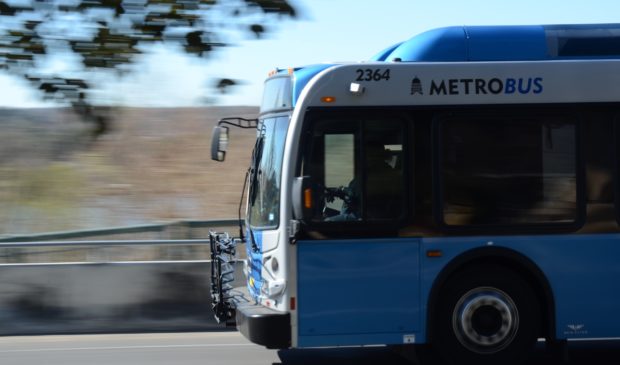County’s new transit plan includes buses, other odds and ends
Monday, July 16, 2018 by
Caleb Pritchard The Travis County Commissioners Court on Tuesday approved a three-year transit development plan that aims to bring a variety of transit and transit-adjacent services to parts of the county where no buses currently operate.
The 10 transit gap zones identified in the plan, which was a year in the making, sit outside of the Capital Metropolitan Transportation Authority’s service. The U.S. Census Bureau recently designated the zones as urbanized areas, thus disqualifying their residents from being able to access the Capital Area Rural Transportation System.
For each gap zone, the plan recommends one of three potential service types. The first, identified as suitable for the Presidential Meadows neighborhood near Manor as well as Austin’s Colony, calls for a mobility-on-demand program similar to the Pickup pilot Capital Metro wrapped up last month.
The plan’s second category, labeled community-based solutions, is the least intensive of the three and will be applied to four of the gap zones “where traditional transit projects may not be suited or where the community has expressed other transportation needs,” according to the plan. Those solutions include conducting outreach about existing services including Metro RideShare and working with faith-based and nonprofit organizations to help residents move around.
Finally, the plan’s third category envisions potential extensions on existing Capital Metro conventional bus routes.
The first of the plan’s three years calls for several community-based solution programs as well as the launch of the Presidential Meadows mobility-on-demand pilot. No existing bus routes will be changed, but an extension analysis will be conducted on the No. 277 that currently terminates at Del Valle High School. Any recommended changes to that route will happen in the plan’s second year, along with further extension analyses and the launch of the Austin’s Colony mobility-on-demand pilot.
As many as five more route extensions could take place in the plan’s third and final year.
Those incremental changes mean an incrementally rising price tag. The Federal Transit Administration will pay a flat $221,422 each year, while the county’s share will start at $268,241 and end at $537,232.
Commissioner Jeff Travillion hailed the plan for identifying several sections of eastern Travis County as transit gap zones. Those areas, he said, are where displaced Austinites are flocking to and where increasing development is on the horizon.
“I think the really salient point is this plan responds to issues that are on the ground today,” he said.
Commissioner Gerald Daugherty, whose own Precinct 3 also includes several gap zones, acknowledged that the plan is “good” but nonetheless groused about funding transit service with both federal and county funds.
Capital Metro’s primary revenue source is through a one-penny sales tax it collects within its member jurisdictions. However, the agency has in recent years expanded transit service to outside jurisdictions using the same formula of federal grants and local matches. Daugherty reiterated to Travillion his avowed distaste for that strategy.
“I think that, Commissioner Travillion, you and I are going to have to work hard at the (Legislature), and let’s go and do what we know needs to be done. We need a service area change. And if that means going out and asking people out there to be taxed, I mean, then so be it,” Daugherty said.
After Travillion replied that he’d be happy to work with Daugherty on that, County Judge Sarah Eckhardt said she would love to see Capital Metro’s service area expand the conventional way as well. However, she noted, most regional communities who aren’t already members of the agency have maxed out their legal sales tax limits.
“So this is our workaround for legislation that would expand the service area,” she said, adding an assessment of Daugherty’s prospects. “We just don’t see that as a probability.”
Despite Daugherty’s concerns, he joined the 4-0 vote to approve the transit development plan. Commissioner Margaret Gómez did not attend Tuesday’s meeting.
Capital Metro’s board will likely vote on the plan in July, and a draft interlocal agreement will come back for the court’s review in August.
Photo by John Flynn.
The Austin Monitor’s work is made possible by donations from the community. Though our reporting covers donors from time to time, we are careful to keep business and editorial efforts separate while maintaining transparency. A complete list of donors is available here, and our code of ethics is explained here.
You're a community leader
And we’re honored you look to us for serious, in-depth news. You know a strong community needs local and dedicated watchdog reporting. We’re here for you and that won’t change. Now will you take the powerful next step and support our nonprofit news organization?



